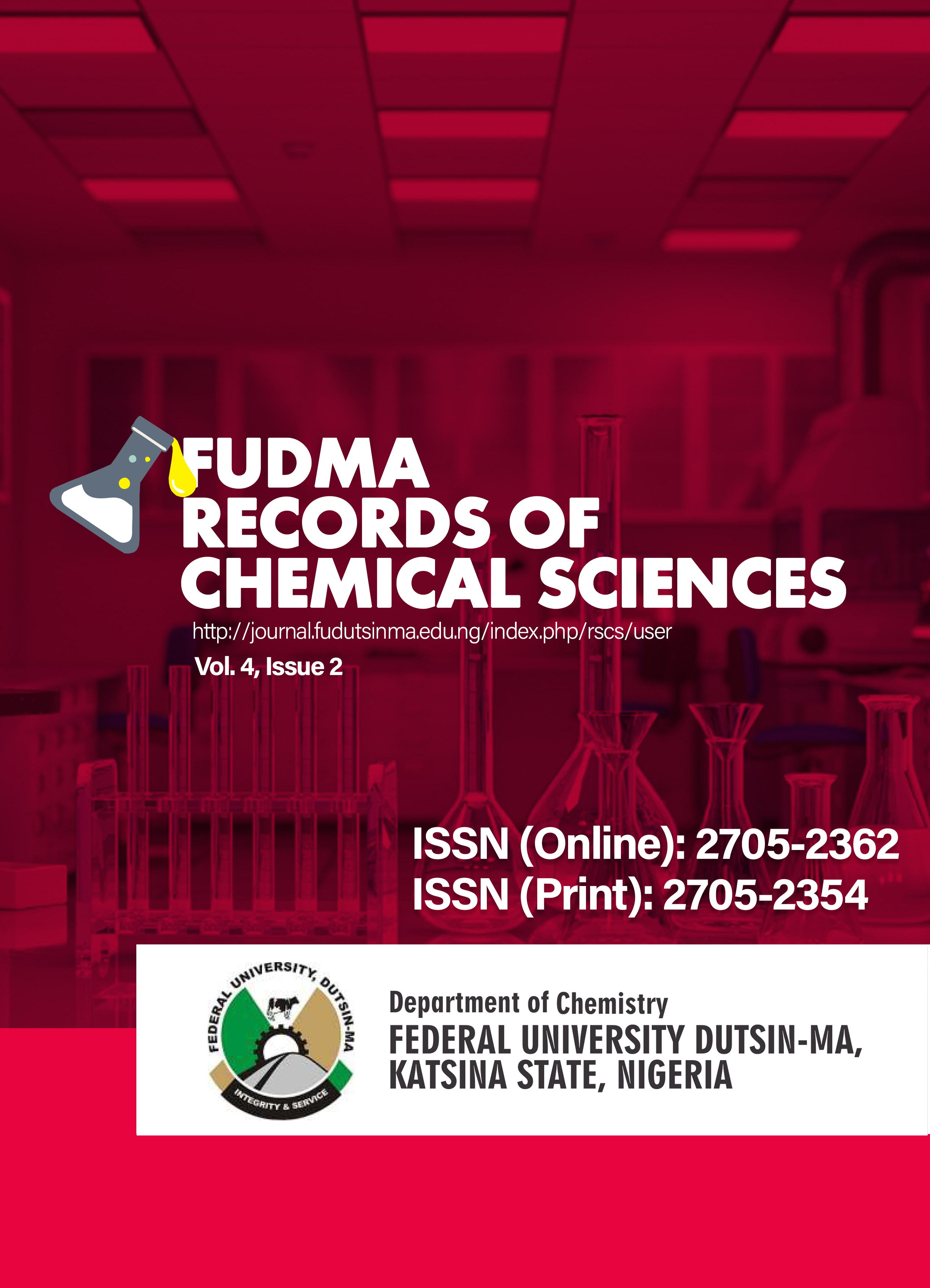Organophosphate Residues in Maize and Health Risk Implications in Selected Communities of Kogi State, Nigeria
DOI:
https://doi.org/10.33003/frscs-2025-0402/11Keywords:
Pesticide Residues , Organophosphates , Kogi State, Maize, Health AssessmentAbstract
The escalating dependence on synthetic pesticides for agricultural purposes in Nigeria has heightened apprehension regarding food safety and public health, especially in rural communities where regulatory oversight is limited. In Kogi State, maize, a principal dietary staple, is routinely exposed to chemical pesticides during cultivation and storage processes. This study investigated the concentration of organophosphate pesticide residues in maize and evaluated associated dietary health risks in four selected villages, Osara, Nagazi, Osara Gada, and Ogaminana. Composite maize samples were collected from farms, markets, and households and were analyzed using Gas Chromatography coupled with an Electron Capture Detector (GC-ECD), following the QuEChERS extraction protocol. The detected pesticides, including Dichlorvos, Chlorpyrifos, and Azinphos-methyl, were all identified as organophosphates. The mean concentrations of Dichlorvos (0.0448 µg/kg) and Chlorpyrifos (0.0449 µg/kg) were below the established FAO/WHO Maximum Residue Limits (MRLs) of 100 µg/kg and 50 µg/kg, respectively. Conversely, Azinphos-methyl recorded a mean concentration of 20.9966 µg/kg, slightly exceeding its MRL of 20 µg/kg. Health risk assessment based on Estimated Daily Intake (EDI) and Hazard Quotient (HQ) showed that Dichlorvos and Chlorpyrifos pose minimal risk (HQ<1), while Azinphos-methyl exhibited a HQ significantly above 1, indicating a potential for chronic health effects. The findings conclude that although most residues were within permissible limits, the presence of high-risk organophosphates such as Azinphos-methyl poses a concern for consumer safety. It is recommended that regular residue monitoring, farmer training on responsible pesticide use, and adoption of integrated pest management (IPM) be prioritized to enhance food safety in Kogi State.






